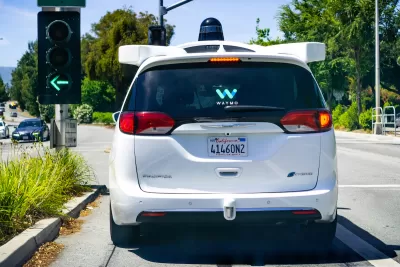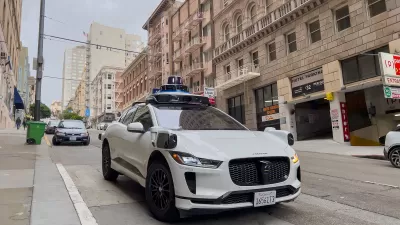Drivers for Uber and Lyft in San Francisco express their concerns and advice for self-driving taxi services.

In an interview for WIRED with 10 ride-hailing app drivers in San Francisco, Aarian Marshall and Caitlin Harrington gathered some advice to the newly minted robot drivers set to expand their presence on city streets. “Some was friendly, some not at all.”
For one, drivers say it’s sometimes necessary to ‘fudge’ the rules of the road, which robotaxis are programmed not to do (at least, not on purpose). “Rideshare passengers are spoiled,” said one driver. And having passengers run to the middle of the street to get picked up may not be safe. “When forced to choose between briefly blocking a driveway (technically a ticketable offense) and loading passengers in the middle of traffic, he’ll sometimes opt for the former.”
Drivers also wondered how autonomous cars will deal with situations when inebriated passengers soil the upholstery or fall asleep in the vehicle. “Cruise has a cleaning fee policy and charges up to $150 for ‘extensive liquid and smelly messes,’ including vomit. Waymo spokesperson Ilina says (human) workers use cameras inside the company's vehicles to determine if a cleaning is needed before or after rides, and that robotaxis are always cleaned when they return to home base for charging or maintenance.”
Other concerns include the unpredictability of city streets and the need for customer service. It remains to be seen if self-driving cars will be able to adapt to real city streets or if their limitations will render them less effective than human drivers. And while some drivers worry about the loss of income, others are looking for the next opportunity. “Some who know this is coming simply shrug—several ride-hail drivers told WIRED that they think the jobs have become too crappy to fight for, because earnings have declined over the years and there’s no reward for sticking around.”
FULL STORY: Uber and Lyft Drivers Have Some Advice for Autonomous Vehicles Set to Swarm the Streets

Alabama: Trump Terminates Settlements for Black Communities Harmed By Raw Sewage
Trump deemed the landmark civil rights agreement “illegal DEI and environmental justice policy.”

Study: Maui’s Plan to Convert Vacation Rentals to Long-Term Housing Could Cause Nearly $1 Billion Economic Loss
The plan would reduce visitor accommodation by 25% resulting in 1,900 jobs lost.

Why Should We Subsidize Public Transportation?
Many public transit agencies face financial stress due to rising costs, declining fare revenue, and declining subsidies. Transit advocates must provide a strong business case for increasing public transit funding.

Paris Bike Boom Leads to Steep Drop in Air Pollution
The French city’s air quality has improved dramatically in the past 20 years, coinciding with a growth in cycling.

Why Housing Costs More to Build in California Than in Texas
Hard costs like labor and materials combined with ‘soft’ costs such as permitting make building in the San Francisco Bay Area almost three times as costly as in Texas cities.

San Diego County Sees a Rise in Urban Coyotes
San Diego County experiences a rise in urban coyotes, as sightings become prevalent throughout its urban neighbourhoods and surrounding areas.
Urban Design for Planners 1: Software Tools
This six-course series explores essential urban design concepts using open source software and equips planners with the tools they need to participate fully in the urban design process.
Planning for Universal Design
Learn the tools for implementing Universal Design in planning regulations.
Smith Gee Studio
Alamo Area Metropolitan Planning Organization
City of Santa Clarita
Institute for Housing and Urban Development Studies (IHS)
City of Grandview
Harvard GSD Executive Education
Toledo-Lucas County Plan Commissions
Salt Lake City
NYU Wagner Graduate School of Public Service





























